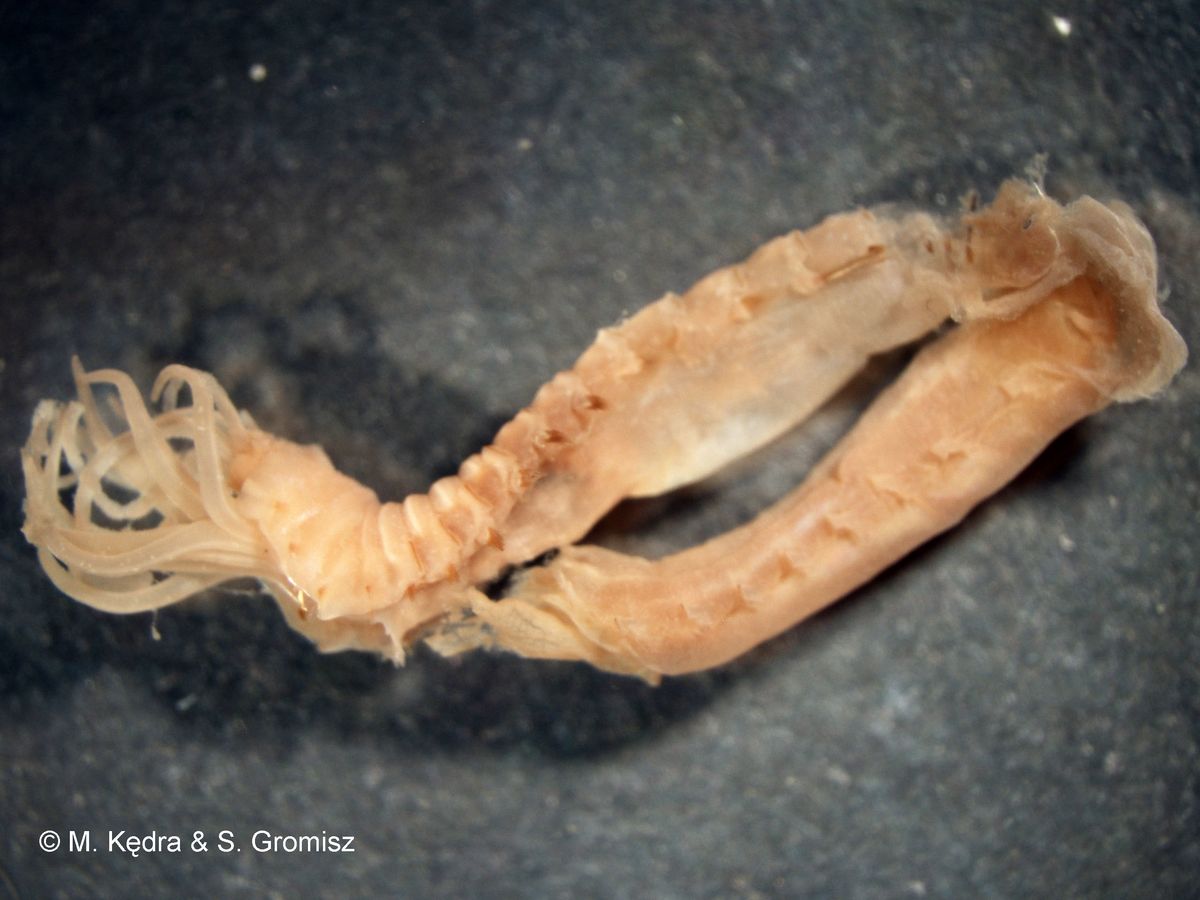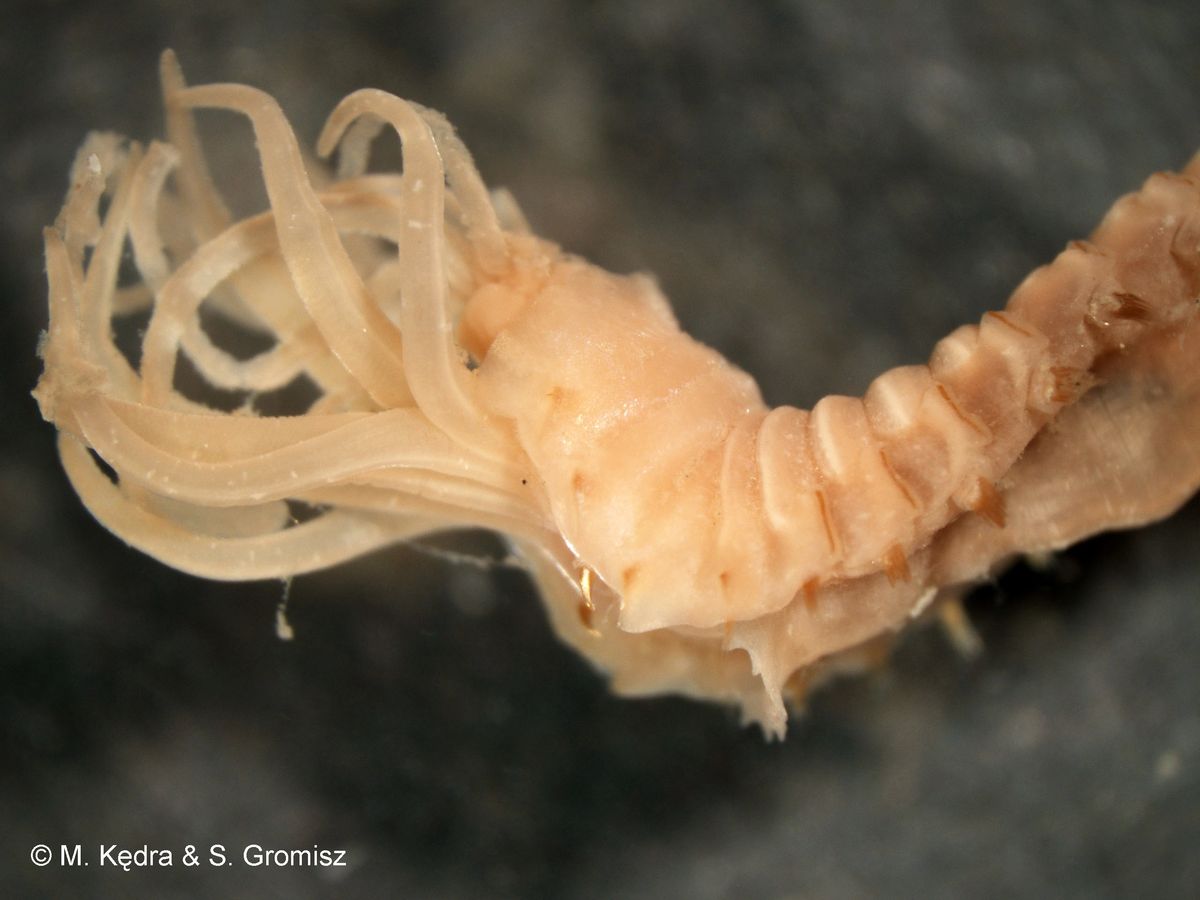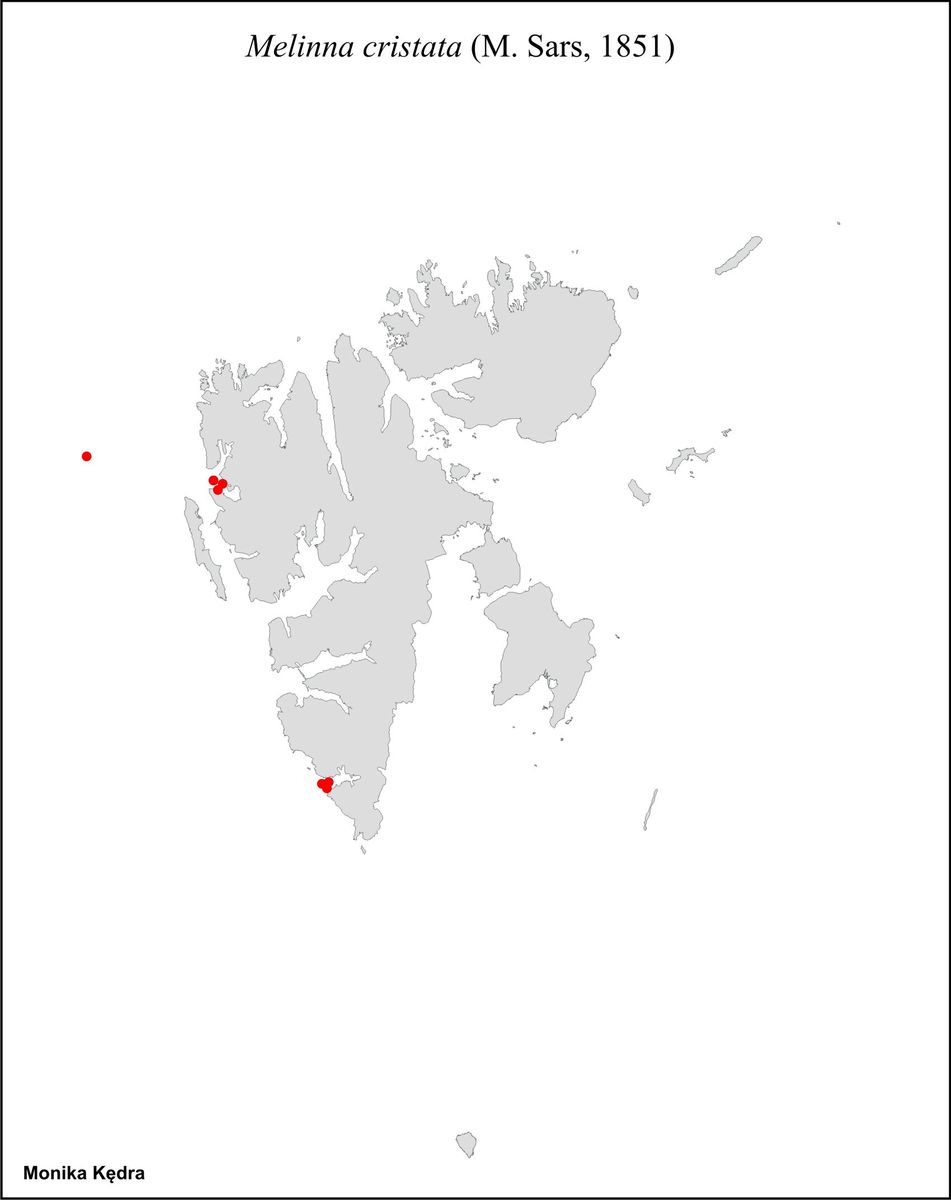Melinna cristata (M. Sars, 1851)

|

|

|
Sabellides cristata M. Sars,1851
Melinna cristata Hessle, 1917
Distinguishing characteristics
A pair of stout dorsal hooks behind the branchiae.
Species description
Prostomium with 3 lobes, without glandular ridges, with eyespots. Branchiae in two groups separated by a distance of about one branchial base and connected by a membrane. Three branchiae of each group in an oblique row slanting posteriorly towards middorsum, the fourth branchia in front of the middle one of the three. A pair of stout dorsal hooks behind the branchiae. An anteriorly oriented serrated brim with sharp points across the dorsum behind the hooks. 16 thoracic segments with notopodia with capillary chaetae, the posterior 14 also with neuropodia with uncini. About 50 uncinigerous abdominal segments. Pygydium with inconspicuous papillae. Tube - characteristic, long, tapering posteriorly, incrusted with a more or less thick layer of clay, and usually with shell fragments transversely arranged and protruding out of the clay.
Size
Up to 50 mm long.
Color
Alive pale yellow, pink or whitish. Branchiae with green spots.
Habitat
Sand. 720 to 1400 m, low sand and high organic content. Sensitive to low levels of hydrocarbons. Species tolerant to excess organic matter enrichment. These species may occur under normal conditions, but their populations are stimulated by organic enrichment (slight unbalance situations).
Mobility
Sedentary.
Feeding
Surface deposit feeder.
Life cycle
Distribution
Arctic-Atlantic-Pacific shelfs, Eastern North Atlantic, Arctic, North Sea, Skagerrak.

